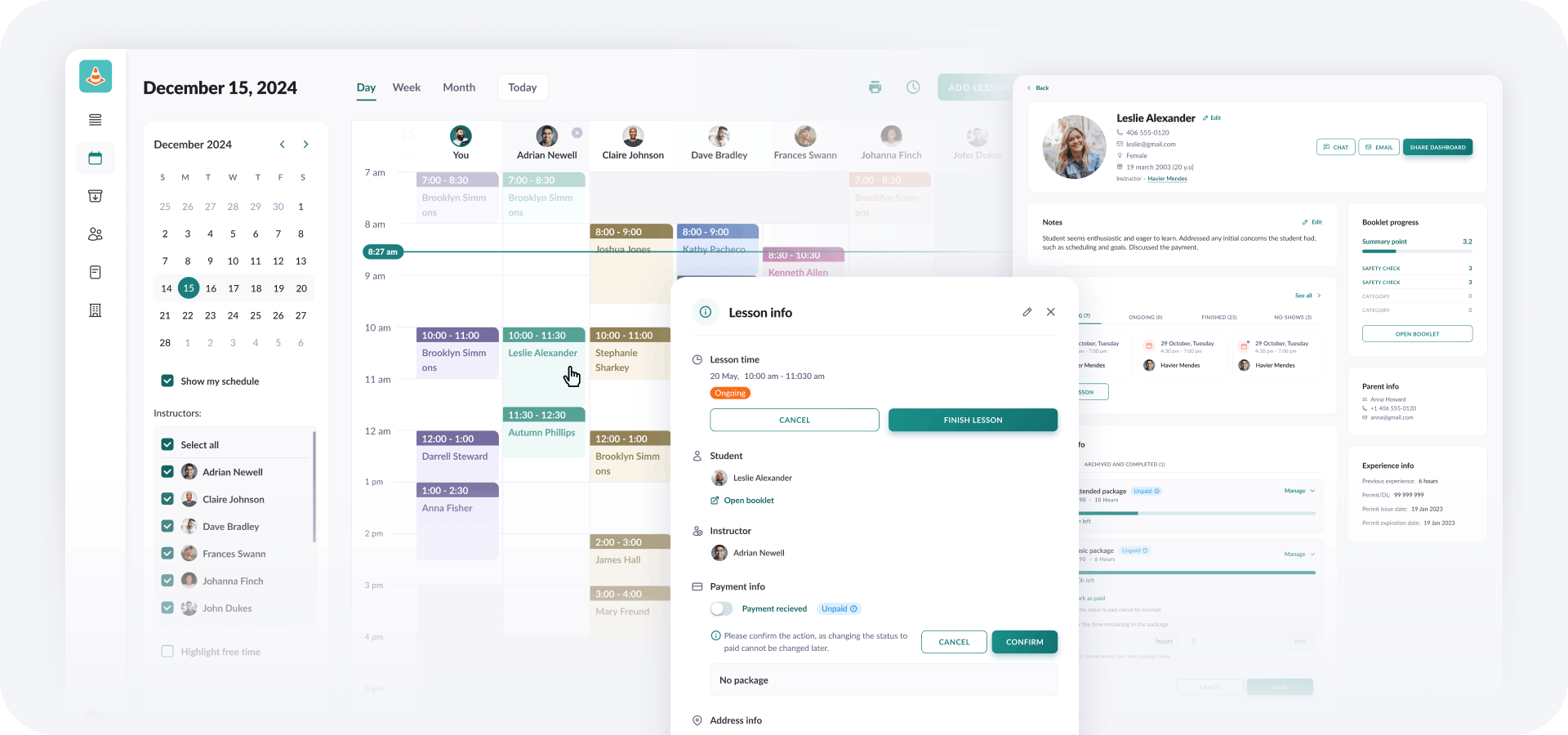
Entry-Level Driver Training Regulations: What New CDL Drivers Need to Know About the New Requirements
Since February 7, 2022, the Federal Motor Carrier Safety Administration (FMCSA) has required that new drivers meet Entry-Level Driver Training (ELDT) regulations. These rules set the basic training requirements for new CDL drivers and apply to those individuals seeking to obtain a Class A or Class B CDL for the first time, upgrade an existing CDL, or receive an initial school bus, passenger or hazardous material endorsement.
Getting Registered
Entry-level drivers will not be allowed to take the CDL skills or knowledge tests without proving that they have completed the required ELDT training requirements provided by a registered provider.
Training providers must register with FMCSA and attest that they meet all federal and state training requirements. Without this registration, training providers cannot appear in the FMCSA Training Provider Registry (TPR) or submit Training Completion Certificates to the TPR.
Once new drivers complete their ELDT training, their training provider will submit a Training Completion Certificate to the TPR. The driver will then be added to the TPR registry, which stores information about all CDL applicants who have completed the new training and certification process. After being added to the registry, these applicants will be allowed to take their CDL skills or knowledge exams, depending on the courses they’ve taken.
Zutobi is an FMCSA approved online theory training provider registered in the Training Provider Registry.
Some of the Things You Learn During Your CDL Training
Basic Operation
How to properly and safely interact with their commercial motor vehicle. This section of the training will cover different operations including shifting, backing, docking, coupling and uncoupling as well as how to conduct pre- and post-trip inspections.
- Orientation. Besides an introduction to the commercial vehicle overall, student drivers will learn about safety, regulations, cargo securement, weigh station requirements, and low clearance formulas. Consequences such as fines and other disciplinary actions will be discussed as well.
- Dashboard. Understanding how to read gauges and use all controls including steering, accelerating, braking and shifting is critical to the training.
- Inspections. Students will learn the required pre-, en route, and post-inspections required on their vehicles and how and where to conduct them safely.
- Basic Control. This section of the course will cover how to move a commercial vehicle safely through tight spaces and turns as well as onto and off of interstate highways.
- Transmission. Student drivers will learn how to effectively and efficiently shift their vehicles to conserve fuel and maintain control.
- Backing and Docking. Students will learn how to evaluate facilities, use spotters, and the get-out-and-look (GOAL) practice.
- Coupling and Uncoupling. The training will cover how to couple and uncouple combination units.
Safe Operating Procedures
How to conduct a visual search, manage communication, regulate space and speed on the road, operate safely at night and in extreme conditions, and avoid distracted driving.
- Visual Search. Student drivers will not only learn how to scan the road for hazards but also recognize distracted drivers, bicyclists and pedestrians.
- Communication. Learning to communicate with other people on the road is important. Students will learn how to properly use lights, signals, horn and eye contact to help ensure others know their intentions.
- Distracted Driving. Besides understanding the appropriate use of cell phones and in-cab features, student drivers are taught about visual, manual, and cognitive attention.
- Speed Management. Students learn how to gauge and manage their speed under various road and weather conditions as well as their load weight. They also learn safe following and braking distances.
- Space Management. Students learn about space requirements around the vehicle under different circumstances.
- Night Operation. Driving at night presents different challenges, and students need to understand how vision, space and speed management, and other factors affect night-time performance.
- Extreme Driving Conditions. Weather that is extremely hot, cold or wet can increase hazards on the road. Students will learn how to operate safely, especially on inclines and around curves as well as how frequently to chain tires if needed.
Advanced Operating Practices
Training on hazard perception, skid control and recovery, jackknifing, railroad-highway grade crossings, and other emergencies.
- Hazard Perception. The course will review noticing and preparing for potential hazards to avoid or minimize emergencies, including driving within construction zones and sites.
- Skid Control and Recovery, Jackknifing, and Other Emergencies. Students will learn how to avoid and recover from skidding, causes of these problems and how to avoid them, and skills such as evasive steering and proper responses to things like hydroplaning and rollovers.
- Railroad-Highway Grade Crossings. Understanding proper clearance as well as signals and signs and how to report obstructions will be reviewed.
Vehicle Malfunctions
How to identify and diagnose malfunctions, conduct safe roadside inspections, and perform basic maintenance tasks.
- Identify and Diagnose Malfunctions. Student drivers will learn how to check all key vehicle systems, which is made up of the engine, engine exhaust auxiliary systems, brakes, drive train, coupling systems, and suspension, and how to keep them in safe, operating condition.
- Roadside Inspections. Students will be taught what authorized roadside inspections will entail and the consequences for operating a commercial vehicle that requires service.
- Maintenance. While many repairs will require expertise that drivers may not have, this course will review basic maintenance tasks to help prevent larger issues or problems.
Non-Driving Activities
Finally, a series of non-driving activities including how to handle and document cargo, complete service hour requirements, meet environmental compliance issues, manage fatigue and wellness, handling post-crash procedures, external communications, trip planning, drug and alcohol dangers, and medical requirements.
Exceptions to Regulations
Since the ELDT regulations are not retroactive, if you received a CDL or an S, P, or H endorsement before February 7, 2022, you are not required to complete new training. In addition, if you secured a commercial learner’s permit (CLP) before that date and receive your CDL before the CLP expires, you are not required to meet the new ELDT regulations. Finally, if you already meet one of the test exceptions in 49 CFR Part 383, you are also exempt from the ELDT requirements.
Zutobi is an FMCSA-approved online theory training provider
Zutobi is the first app in America to become an FMCSA approved theory training provider online. Check out our online resources to help you get your ELDT-certification and take your CDL general knowledge test and applicable endorsement exams.

850+ exam-like questions
All you need to ace your endorsement tests
We are certified to issue Entry Level Driver Training (ELDT) certification to the TPR for CDL drivers.
Recommended articles
Ace your DMV test, guaranteed
Want to Be the Top School in Your Area?
- Simple & automated admin
- More time for teaching
- #1 learning materials for students


